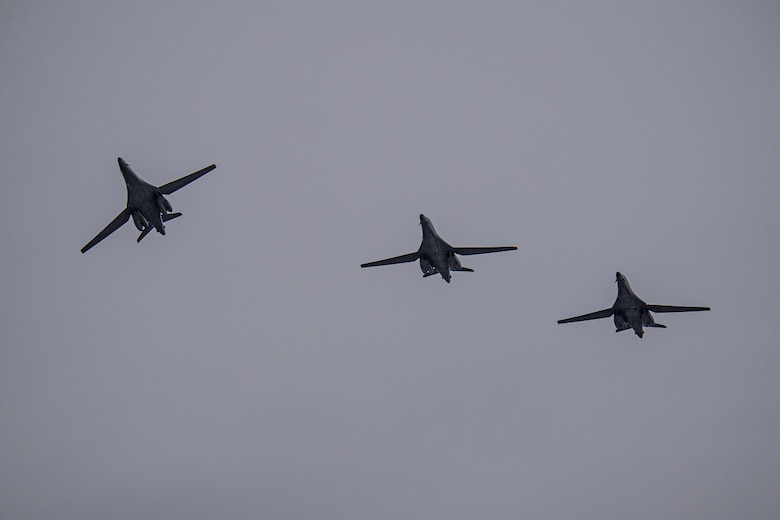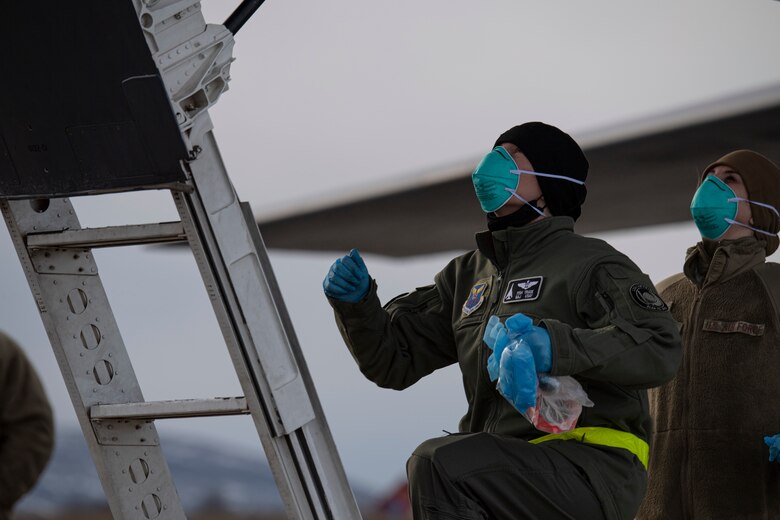Approximately 200 Airmen and four B-1B Lancers assigned to the 7th Bomb Wing at Dyess Air Force Base, Texas, deployed to Ørland Air Force Station in support of a Bomber Task Force deployment.
These strategic bomber missions provide theater familiarization for aircrew members and opportunities for U.S. integration with NATO allies and regional partners.
"This BTF accomplishes objectives from the strategic to tactical levels," said the 9th Expeditionary Bomb Squadron director of operations. "At the tactical level, the 9th EBS is executing the Department of Defense's vision of Dynamic Force Employment, while also cultivating and growing relationships with our allies and partners in Europe."
The exercises the 9th EBS will conduct during the BTF are designed to prepare them to operate with ally and partner militaries to be ready to integrate and present a unified force whenever called upon.
The 9th EBS operations director stated this is the first BTF to a foreign country where we do not have a standing military presence.
"The last time the B-1 operated in this manner was in the late 1990s to support operations in the central area of command," said the 9th EBS operations director. "Operating in the Dynamic Force Employment concept challenges us to rethink how we operate."
Operating out of strategic locations such as Norway allows the U.S. Air Force to provide timely coordinated responses and prepares them for potential future operations.
The training and experience gained from integrating with allies and partners during BTF missions helps prepare Airmen for the potential landscape of future conflict.
"BTFs enhance the readiness necessary to respond to any potential crisis or challenge across the globe," said Lt. Col. Ryan Stallsworth, 9th EBS commander. "The benefits gleaned from integrating and working with ally and partner forces are immense."
Training with the Royal Norwegian Air Force in the European theater and throughout the Arctic provides extensive and crucial experience for aircrew and allows both forces to conduct specific and thorough training missions.
"We will integrate with Norwegian aircraft for the entirety of this deployment and will be practicing high-end conflict scenarios and, perhaps, even developing future tactics, training and procedures," Stallsworth said. "The 9th EBS will learn a lot from our gracious hosts, especially in terms of how to effectively operate in the high north."
The U.S. Air Force remains engaged, postured and ready with a credible force to assure, deter and win in an increasingly complex security environment.
With this third BTF deployment conducted by the 9th EBS, the planning and leadership teams are gaining more and more experience and efficiency that allows them to achieve better results with each BTF executed.
"The benefits of conducting these BTF's are immense: increasing tactical proficiency by integrating with allies and partners, strengthening logistics processes through BTF deployment planning and execution," Stallsworth said. "Our ability to quickly respond, if necessary, while assuring our allies and partners, rests on the fact that we are here in Norway, forward postured and building readiness."

A B-1B Lancer prepares to take off from Dyess Air Force Base, Texas in support of a Bomber Task Force deployment to Ørland Air Force Station, Norway, Feb. 21, 2021. The B-1 is capable of providing vast numbers of precision and non-precision bombs at any moment against any enemy, anywhere in the world. (U.S. Air Force photo by Airman 1st Class Josiah Brown)

Three B-1B Lancers assigned to the 9th Expeditionary Bomb Squadron, Dyess Air Force Base, Texas, fly in formation over Ørland Air Force Station, Norway, in support of a Bomber Task Force deployment, Feb. 22, 2021. The B-1 is a highly-versatile, supersonic, multi-mission weapon system that carries the largest payload of both guided and unguided weapons in the United States Air Force inventory. (U.S. Air Force photo by Airman 1st Class Colin Hollowell)

Airmen assigned to the 9th Expeditionary Bomb Squadron, Dyess Air Force Base, Texas, prepare to sanitize the cockpit of a B-1B Lancer after landing at Ørland Air Force Station, Norway, Feb. 22, 2021, in support of a Bomber Task Force deployment. The 9th EBS underwent a variety of COVID-19 preventative measures in order to be in compliance with both host nation and Department of Defense requirements. (U.S. Air Force photo by Airman 1st Class Colin Hollowell)






